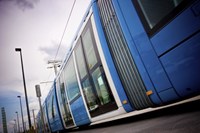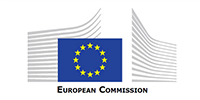
The global shift towards low-carbon, circular economy has started and its pace is accelerating. To ensure Europe stays competitive and will be able to respond to the increasing mobility needs of people and goods, the Commission's low-emission mobility strategy sets clear and fair guiding principles to Member States to prepare for the future. The Energy Union strategy contributes to this goal.
The low-emission mobility strategy frames the initiatives that the Commission is planning in the coming years, and it maps the areas in which it is exploring options. It also shows how initiatives in related fields are linked and how synergies can be achieved. It should be seen as one of the tools to modernise the European economy and strengthen its Internal Market.
The main elements of the Strategy
- Increasing the efficiency of the transport system by making the most of digital technologies, smart pricing and further encouraging the shift to lower emission transport modes,
- Speeding up the deployment of low-emission alternative energy for transport, such as advanced biofuels, electricity, hydrogen and renewable synthetic fuels and removing obstacles to the electrification of transport
- Moving towards zero-emission vehicles. While further improvements to the internal combustion engine will be needed, Europe needs to accelerate the transition towards low- and zero-emission vehicles. (EU legislation currently refers to low-emission vehicles as vehicles having tailpipe emissions below 50g/km. This would include some plug-in hybrids, full electric cars and fuel cell (i.e. hydrogen-powered) vehicles. The latter two examples also represent zero-emission vehicles.)
Cities and local authorities are crucial for the delivery of this strategy. They are already implementing incentives for low-emission alternative energies and vehicles, encouraging modal shift to active travel (cycling and walking), public transport and/or shared mobility schemes, such as bike, car-sharing and car-pooling, to reduce congestion and pollution.
Finally, this Strategy reiterates Europe's commitment in pursuing global efforts to control emissions from international aviation and maritime transport.
A strategy to support jobs, growth, investment and innovation
Strengthening Europe's competitiveness and stimulating the economy is a priority of the Juncker Commission:
- The strategy integrates a broader set of measures to support Europe's transition to low-carbon economy. It identifies key priorities, forexample in research and innovation in low-emission mobility solutions, providing clarity for future investment decisions.
- Manufacturing and service industries will be able to plan their investments and make business choices with a mid-century goal in mind. Europe's transition towards low- and zero-emission vehicles will be accelerated, fuel efficiency of lorries and coaches will need to step up. Barriers for innovative mobility services need to be removed.
- The energy sector and fuel suppliers will be able to plan investments into advanced energy for transport, such as advanced biofuels.
- Transport is an important employer. Workers will receive help in acquiring the necessary skills to match the technological transition towards low-emission mobility, in the framework of the New Skills Agenda for Europe .
- This Strategy provides a toolbox for policy makers in Member States, at regional and local level to design their strategies for low-emission mobility close to where the problems are felt most.
Available funding to support actions
The Strategy draws on existing mechanisms and funds. President Juncker's Investment Plan for Europe plays a very important role, with significant progress already made with projects that are in the pipeline for funding under the European Fund for Strategic Investment . In addition, EUR 70 billion is available for transport under the European Structural and Investment Fund , including EUR 39 billion for supporting the move towards low-emission mobility, of which EUR 12 billion for low-carbon and sustainable urban mobility alone. Under the research programme Horizon2020 , EUR 6.4 billion are available for low-carbon mobility projects.
Benefits for the European citizens and consumers
Once fully umplemented in the Member States will lead to improvements in air quality, the reduction in noise levels, lower congestion levels and improved safety.
Consumers will benefit from more efficient, less-energy consuming cars. Consumers will also benefit from better infrastructure for alternative fuels , better links between modes of transport and better safety and fewer delays thanks to roll-out of digital technologies .
Better information will allow them to make informed choices for their daily mobility needs. For example, car labelling will be reviewed, and the respective benefits of alternative fuels will be made clearer.
A strategy to make the transport system more efficient
Digital technologies, especially Cooperative Intelligent Transport Systems (C-ITS), have a huge potential to improve road safety as well as the efficiency and attractiveness of transport. The Commission is preparing a Plan to stimulate the use of such technologies, in particular communication links between vehicles and between vehicles and infrastructure . The Commission is also working on improving road charging , to make it fairer and more efficient and better reflect the polluter-pays and user-pays principles. This includes common standards for a distance-based charging system in the EU. The Commission will also take further measures to promote links between different modes of transport, helping to create seamless logistics chains.
A strategy to promote the use of low-emission energy in transport
Transport in the EU still depends on oil for about 94% of its energy needs. Through the Strategy, the Commission is looking into how to accelerate the use of low-emission alternative energy, such as advanced biofuels, electricity, hydrogen and renewable synthetic fuels by providing strong incentives to innovate. With such policy measures the share of low-emission energy could increase, providing about 15-17% of transport energy demand in 2030 and replacing oil products.
The Commission is also looking into better synergies between the energy and transport systems, for example addressing distribution challenges of electricity at peak times. This would make charging of electric vehicles easier.
In accordance with Directive on alternative fuel infrastructure , Member States are required to implement common standards, including a common plug for electric vehicles, and roll out infrastructure for alternative fuels . In co-operation with Member States and the European Standardisation Organisations, the work on better interoperability and standardisation in particular for electro-mobility continues. In addition, the Commission will develop a methodology for easy price comparison of electricity and other conventional and alternative fuels.
A strategy to create a market for zero-emission vehicles
The Commission has proposed improvements and already implemented some important improvements on how vehicle emissions are measured and verified. This is a necessary precondition to ensure that standards have an impact and that consumers can trust them. The Commission is working on post-2020 standards for cars and vans. Emissions from conventional combustion engines will need to be further reduced after 2020. Zero- and low-emission vehicles will need to be deployed and gain significant market share. Their deployment will significantly improve air quality in particular in cities. Together with this Strategy, the Commission is launching a public consultation to revise the current legislative framework for post-2020 standards for cars and vans.
To support demand by users, the Commission is working on improving customer information, for example by reviewing the Car Labelling Directive , and on incentives in public procurement rules, in the context of a revision of the Clean Vehicles Directive . This can be very powerful tool to support deployment for example of zero-emission city buses.
Stepping up action on lorries, coaches and buses
The Commission will accelerate work to curb carbon dioxide emissions from lorries, buses and coaches. They currently represent around a quarter of road transport carbon dioxide emissions and their share is set to grow.
While lorries, buses and coaches have been subject to similar air pollution standards as cars and vans, and are now required to meet them under real driving conditions, the EU has neither fuel efficiency standards for them, nor a system to monitor their carbon dioxide emissions. Other parts of the world, such as the US, China, Japan and Canada, have already introduced standards, and some European manufacturers participate in these schemes.
Together with this Strategy, the Commission is launching a public consultation which primarily focuses on monitoring and reporting of emissions, but also seeks first feedback on standards.
Action at global level
The EU is committed to reaching an agreement to address international aviation emissions through a global market-based mechanism . This and other measures, such as the recently agreed international carbon dioxide standard for new aircraft, are intended to ensure the carbon neutral growth of international aviation from 2020. The EU will review its own domestic measure (the aviation element of the EU Emission Trading System) in the light of the outcome of the International Civil Aviation Organization's General Assembly meeting this autumn.
The EU is also committed to securing a mandatory global agreement for the collection and reporting of greenhouse gas emissions from international shipping . This needs to be complemented by an international agreement on an emissions reduction objective for the shipping sector. The EU already has legislation in place that requires ships using EU ports to monitor, report and verify their emissions from 2018. In the event of an international agreement, the EU may align this legislation to a global system.
About the European Commission
Transport directly affects everyone in Europe. Whatever age we are, and whatever activities we undertake, transport and mobility play a fundamental role in today’s world. The aim of the Commission is to promote a mobility that is efficient, safe, secure and environmentally friendly and to create the conditions for a competitive industry generating growth and jobs. The issues and challenges connected to this require action at European or even international level; no national government can address them successfully alone. The European Commission’s Directorate-General for Mobility and Transport works in concert with the European Union Member States, European industry, citizens and stakeholders.




Comments
There are no comments yet for this item
Join the discussion